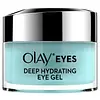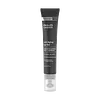What's inside
What's inside
 Key Ingredients
Key Ingredients

 Benefits
Benefits

 Concerns
Concerns

No concerns
 Ingredients Side-by-side
Ingredients Side-by-side

Water
Skin ConditioningPropylene Glycol
HumectantGlycerin
HumectantNiacinamide
SmoothingDimethicone
EmollientPanthenol
Skin ConditioningSodium Hyaluronate
HumectantPalmitoyl Pentapeptide-4
Skin ConditioningCucumis Sativus Fruit Extract
EmollientCaprylyl Glycol
EmollientDimethiconol
EmollientHamamelis Virginiana Water
AstringentDisodium EDTA
Carbomer
Emulsion StabilisingAcrylates/C10-30 Alkyl Acrylate Crosspolymer
Emulsion StabilisingGlyceryl Acrylate/Acrylic Acid Copolymer
HumectantPvm/Ma Copolymer
Emulsion StabilisingAminomethyl Propanol
Buffering1,2-Hexanediol
Skin ConditioningPhenoxyethanol
PreservativeCamellia Sinensis Leaf Extract
AntimicrobialWater, Propylene Glycol, Glycerin, Niacinamide, Dimethicone, Panthenol, Sodium Hyaluronate, Palmitoyl Pentapeptide-4, Cucumis Sativus Fruit Extract, Caprylyl Glycol, Dimethiconol, Hamamelis Virginiana Water, Disodium EDTA, Carbomer, Acrylates/C10-30 Alkyl Acrylate Crosspolymer, Glyceryl Acrylate/Acrylic Acid Copolymer, Pvm/Ma Copolymer, Aminomethyl Propanol, 1,2-Hexanediol, Phenoxyethanol, Camellia Sinensis Leaf Extract
Water
Skin ConditioningCyclopentasiloxane
EmollientButylene Glycol
HumectantPentylene Glycol
Skin ConditioningTapioca Starch
Methyl Gluceth-20 Benzoate
EmollientGlycerin
HumectantDimethicone
EmollientCyclohexasiloxane
EmollientPolysilicone-11
Palmitoyl Tripeptide-38
Skin ConditioningCaprooyl Tetrapeptide-3
Skin ProtectingPalmitoyl Tripeptide-5
Skin ConditioningNiacinamide
SmoothingPhospholipids
Skin ConditioningHyaluronic Acid
HumectantSodium Hyaluronate
HumectantVitis Vinifera Seed Extract
AntimicrobialPanthenol
Skin ConditioningSalix Alba Extract
Skin ConditioningCamellia Sinensis Leaf Extract
AntimicrobialAdenosine
Skin ConditioningGlycyrrhiza Glabra Root Extract
BleachingPisum Sativum Extract
Skin ConditioningPolyacrylate Crosspolymer-6
Emulsion StabilisingDunaliella Salina Extract
Skin ConditioningHydroxypropyl Cyclodextrin
MaskingDextran
Polysorbate 20
EmulsifyingAmmonium Acryloyldimethyltaurate/Vp Copolymer
Disodium EDTA
Phenoxyethanol
PreservativeWater, Cyclopentasiloxane, Butylene Glycol, Pentylene Glycol, Tapioca Starch, Methyl Gluceth-20 Benzoate, Glycerin, Dimethicone, Cyclohexasiloxane, Polysilicone-11, Palmitoyl Tripeptide-38, Caprooyl Tetrapeptide-3, Palmitoyl Tripeptide-5, Niacinamide, Phospholipids, Hyaluronic Acid, Sodium Hyaluronate, Vitis Vinifera Seed Extract, Panthenol, Salix Alba Extract, Camellia Sinensis Leaf Extract, Adenosine, Glycyrrhiza Glabra Root Extract, Pisum Sativum Extract, Polyacrylate Crosspolymer-6, Dunaliella Salina Extract, Hydroxypropyl Cyclodextrin, Dextran, Polysorbate 20, Ammonium Acryloyldimethyltaurate/Vp Copolymer, Disodium EDTA, Phenoxyethanol
Ingredients Explained
These ingredients are found in both products.
Ingredients higher up in an ingredient list are typically present in a larger amount.
Camellia Sinensis Leaf Extract is derived from the leaves of the tea plant. Black tea, green tea, and oolong tea are all harvested from this plant.
This ingredient has many skin benefits:
This ingredient contains polyphenols, a strong antioxidant. Antioxidants help fight off molecules that damage skin cells.
On top of that, the antioxidants in green tea neutralize free-radicals from the sun. This gives the skin some extra UV protection, but should not replace sunscreen.
Many components of tea have anti-inflammatory properties.
Polyphenols and L-theanine help soothe the skin and reduce irritation. The caffeine in Camellia Sinensis Leaf Extract helps calm inflamed blood vessels.
Other compounds found in tea include: Vitamin Bs, linoleic acid, magnesium, calcium, iron, and zinc.
Research has shown both drinking Camellia Sinensis Leaf Tea and applying it to the skin can help boost skin elasticity and hydration. Studies also show using tea extract may reduce sebum, or oil, production.
Learn more about Camellia Sinensis Leaf ExtractDimethicone is a type of synthetic silicone created from natural materials such as quartz.
What it does:
Dimethicone comes in different viscosities:
Depending on the viscosity, dimethicone has different properties.
Ingredients lists don't always show which type is used, so we recommend reaching out to the brand if you have questions about the viscosity.
This ingredient is unlikely to cause irritation because it does not get absorbed into skin. However, people with silicone allergies should be careful about using this ingredient.
Note: Dimethicone may contribute to pilling. This is because it is not oil or water soluble, so pilling may occur when layered with products. When mixed with heavy oils in a formula, the outcome is also quite greasy.
Learn more about DimethiconeDisodium EDTA plays a role in making products more stable by aiding other preservatives.
It is a chelating agent, meaning it neutralizes metal ions that may be found in a product.
Disodium EDTA is a salt of edetic acid and is found to be safe in cosmetic ingredients.
Learn more about Disodium EDTAGlycerin is already naturally found in your skin. It helps moisturize and protect your skin.
A study from 2016 found glycerin to be more effective as a humectant than AHAs and hyaluronic acid.
As a humectant, it helps the skin stay hydrated by pulling moisture to your skin. The low molecular weight of glycerin allows it to pull moisture into the deeper layers of your skin.
Hydrated skin improves your skin barrier; Your skin barrier helps protect against irritants and bacteria.
Glycerin has also been found to have antimicrobial and antiviral properties. Due to these properties, glycerin is often used in wound and burn treatments.
In cosmetics, glycerin is usually derived from plants such as soybean or palm. However, it can also be sourced from animals, such as tallow or animal fat.
This ingredient is organic, colorless, odorless, and non-toxic.
Glycerin is the name for this ingredient in American English. British English uses Glycerol/Glycerine.
Learn more about GlycerinNiacinamide is a multitasking form of vitamin B3 that strengthens the skin barrier, reduces pores and dark spots, regulates oil, and improves signs of aging.
And the best part? It's gentle and well-tolerated by most skin types, including sensitive and reactive skin.
You might have heard of "niacin flush", or the reddening of skin that causes itchiness. Niacinamide has not been found to cause this.
In very rare cases, some individuals may not be able to tolerate niacinamide at all or experience an allergic reaction to it.
If you are experiencing flaking, irritation, and dryness with this ingredient, be sure to double check all your products as this ingredient can be found in all categories of skincare.
When incorporating niacinamide into your routine, look out for concentration amounts. Typically, 5% niacinamide provides benefits such as fading dark spots. However, if you have sensitive skin, it is better to begin with a smaller concentration.
When you apply niacinamide to your skin, your body converts it into nicotinamide adenine dinucleotide (NAD). NAD is an essential coenzyme that is already found in your cells as "fuel" and powers countless biological processes.
In your skin, NAD helps repair cell damage, produce new healthy cells, support collagen production, strengthen the skin barrier, and fight environmental stressors (like UV and pollution).
Our natural NAD levels start to decline with age, leading to slower skin repair, visible aging, and a weaker skin barrier. By providing your skin niacinamide, you're recharging your skin's NAD levels. This leads to stronger, healthier, and younger looking skin.
Another name for vitamin B3 is nicotinamide. This vitamin is water-soluble and our bodies don't store it. We obtain Vitamin B3 from either food or skincare. Meat, fish, wheat, yeast, and leafy greens contain vitamin B3.
The type of niacinamide used in skincare is synthetically created.
Learn more about NiacinamidePanthenol is a common ingredient that helps hydrate and soothe the skin. It is found naturally in our skin and hair.
There are two forms of panthenol: D and L.
D-panthenol is also known as dexpanthenol. Most cosmetics use dexpanthenol or a mixture of D and L-panthenol.
Panthenol is famous due to its ability to go deeper into the skin's layers. Using this ingredient has numerous pros (and no cons):
Like hyaluronic acid, panthenol is a humectant. Humectants are able to bind and hold large amounts of water to keep skin hydrated.
This ingredient works well for wound healing. It works by increasing tissue in the wound and helps close open wounds.
Once oxidized, panthenol converts to pantothenic acid. Panthothenic acid is found in all living cells.
This ingredient is also referred to as pro-vitamin B5.
Learn more about PanthenolPhenoxyethanol is a preservative that has germicide, antimicrobial, and aromatic properties. Studies show that phenoxyethanol can prevent microbial growth. By itself, it has a scent that is similar to that of a rose.
It's often used in formulations along with Caprylyl Glycol to preserve the shelf life of products.
Sodium Hyaluronate is hyaluronic acid's salt form. It is commonly derived from the sodium salt of hyaluronic acid.
Like hyaluronic acid, it is great at holding water and acts as a humectant. This makes it a great skin hydrating ingredient.
Sodium Hyaluronate is naturally occurring in our bodies and is mostly found in eye fluid and joints.
These are some other common types of Hyaluronic Acid:
Learn more about Sodium HyaluronateWater. It's the most common cosmetic ingredient of all. You'll usually see it at the top of ingredient lists, meaning that it makes up the largest part of the product.
So why is it so popular? Water most often acts as a solvent - this means that it helps dissolve other ingredients into the formulation.
You'll also recognize water as that liquid we all need to stay alive. If you see this, drink a glass of water. Stay hydrated!
Learn more about Water